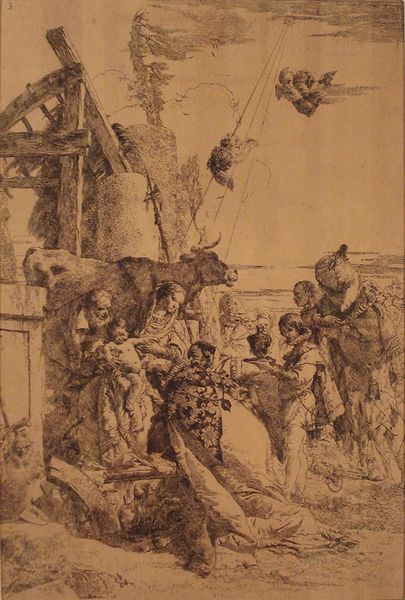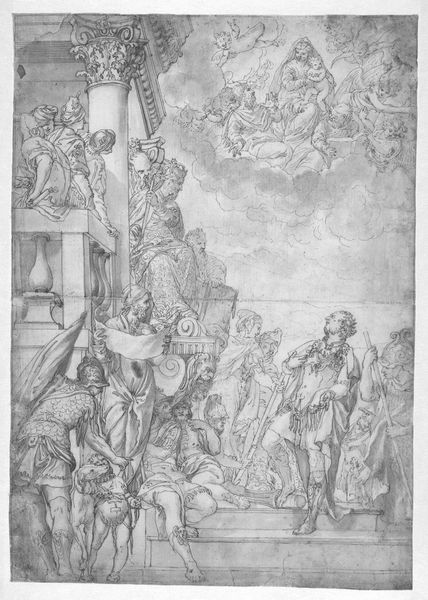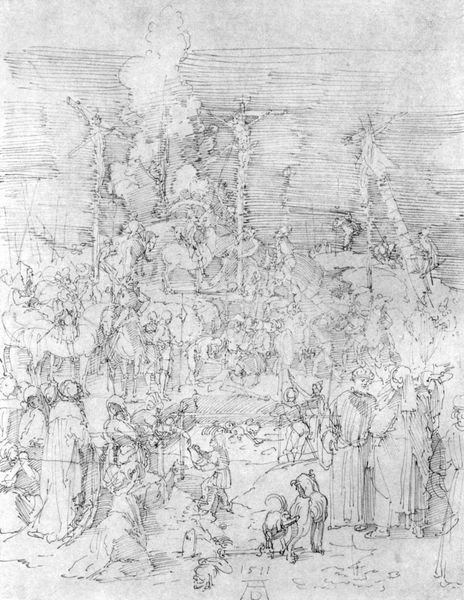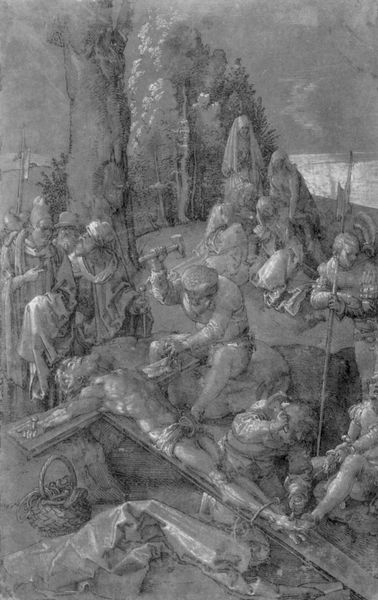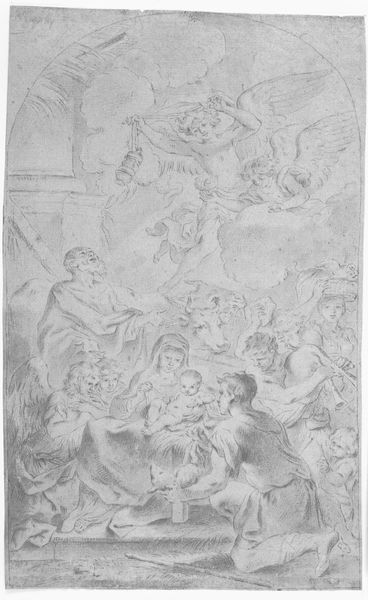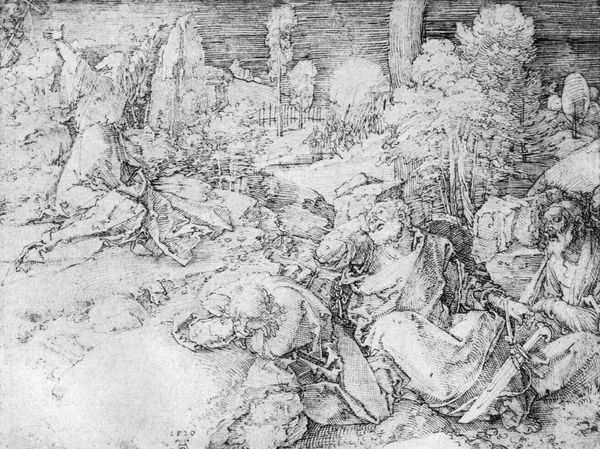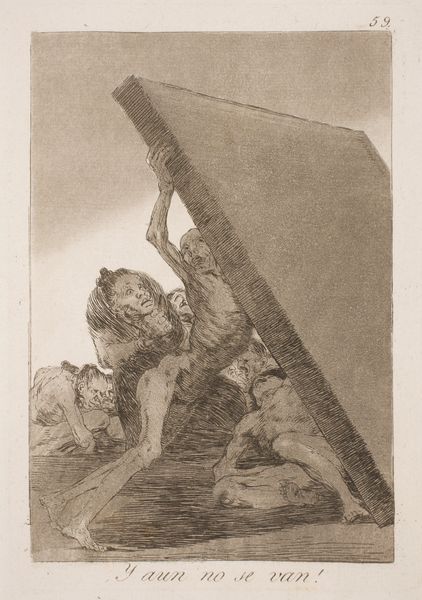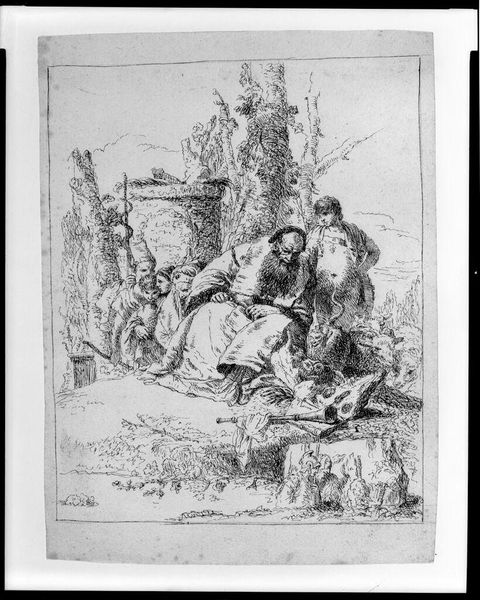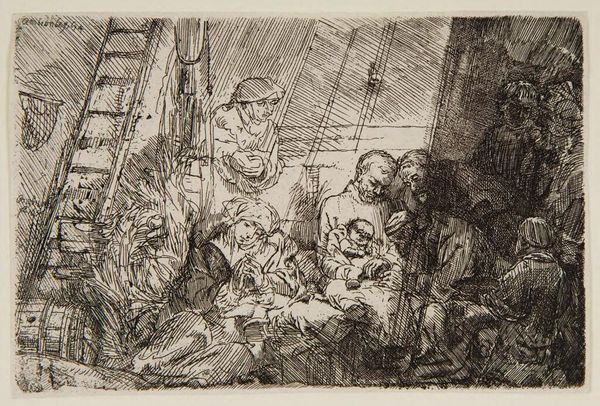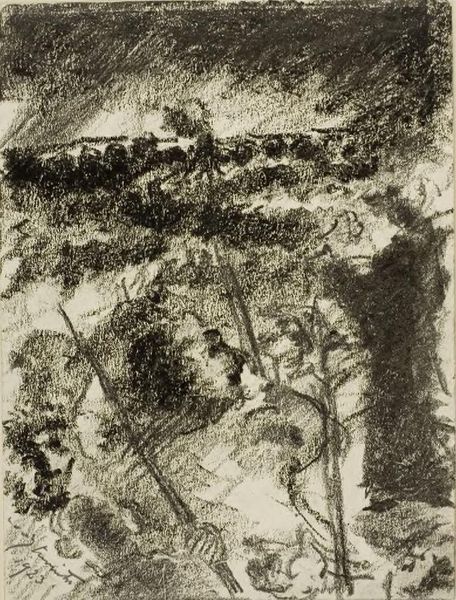
drawing, print, etching
#
portrait
#
drawing
#
allegory
#
baroque
# print
#
etching
#
figuration
#
history-painting
Dimensions: 16 15/16 x 11 3/8 in. (43.1 x 28.9 cm)
Copyright: Public Domain
Curator: The emotional energy conveyed in this work is astounding, isn’t it? Editor: Yes, but look at the detail. Giovanni Battista Tiepolo offers us an etching titled “Adoration of the Magi,” made sometime between 1733 and 1773. The scene is almost chaotic, rendered in fine, swirling lines. Curator: I find the choice of black and white fascinating, because it emphasizes the play of light and shadow. Look how the forms emerge and dissolve almost ethereally; it’s as if he is showing the ineffable breaking into the here and now. The symbols, from the ox and ass, and heavenly figures underscore themes of ancient prophecies fulfilled and a shift in power dynamics. Editor: And indeed that sense of upheaval. Consider the colonial implications of depicting the Magi, figures often representing different continents and races, paying homage to a European, white Jesus. Who exactly is served here? Does it reflect contemporary society and political structures, too? Curator: That’s insightful. You see, the motif of adoration has a long symbolic history. It depicts acknowledgement and reverence. Here the artist creates a stage where the known world bends its knee to something greater, maybe the possibility of renewal. Notice how Tiepolo arranges the holy family beneath a decaying structure to further highlight themes of divine intervention during times of social change. Editor: I think you can't discuss Tiepolo, who so readily accepted commissions from wealthy European families, without touching on those tensions, especially given that historical and biblical subjects had increasingly come to represent conservative power. While, on one hand, a new spiritual beginning is proposed, the old establishment looms quite menacingly. It looks almost dystopian. Curator: Dystopian in the adoration? Perhaps. The symbolic narrative gives cause for contemplation, it invites discourse between darkness and illumination, especially through light and the linear. For me, the work holds lasting relevance, as it pushes one to ponder those enduring dynamics of faith and authority. Editor: It urges critical investigation into historical context, demanding that we analyze art’s role in the construction, endorsement, and maintenance of societal constructs. Curator: Absolutely, our journey into considering iconography enhances understanding! Editor: Precisely, by interrogating history we better understand both power and its alternatives.
Comments
No comments
Be the first to comment and join the conversation on the ultimate creative platform.

